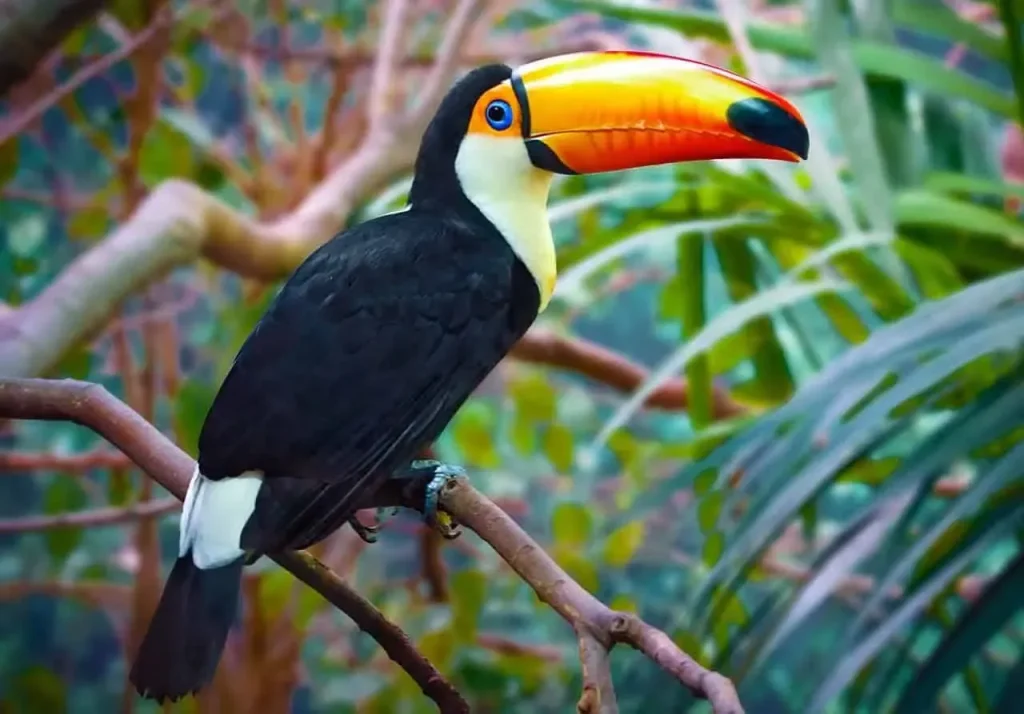Embarking on a bird safari in the Forest of Bowland is an extraordinary way to connect with nature and witness some of the UK’s most elusive avian treasures. Known for its rugged terrain and picturesque landscapes, this hidden gem is the perfect backdrop for wildlife watching in the UK. The Forest of Bowland is renowned for its rich population of raptors, including the rare hen harrier, which mesmerizes bird watchers with its stunning displays. Whether you’re seeking hen harrier sightings or hoping to catch glimpses of the UK’s rarest birds of prey, this unique destination offers a chance to experience nature tourism like no other. Prepare for an adventure where the songs of enchanting birds and the lush flora create an unforgettable symphony of sights and sounds.
A journey into the heart of the Forest of Bowland unveils a remarkable opportunity for bird enthusiasts and nature lovers alike. This captivating area, often overlooked in favor of more famous national parks, serves as a sanctuary for avian life, showcasing an array of species from elusive raptors to vibrant songbirds. As you explore this diverse habitat through birdwatching experiences, you might be fortunate enough to witness breathtaking displays by the hen harrier or encounter some of the UK’s rarest birds of prey. In addition to its ecological significance, this region offers a peaceful retreat, perfect for those eager to delve into nature tourism and appreciate the wild beauty of the Bowland landscape. The quiet allure of the moors invites adventurers to discover the rich tapestry of wildlife that calls this picturesque area home.
Discovering the Raptors of the Forest of Bowland
The Forest of Bowland is an astonishing habitat for various raptors, most notably the hen harrier, which has become a symbol of conservation efforts in the UK. Known for their elusive nature, hen harriers are a highlight for bird watchers venturing into this often-overlooked landscape. As the male and female harriers perform their breathtaking sky dances, observers are treated to a rare glimpse of avian courtship in the wild, making every visit to Bowland a rewarding experience. Sightings like these underscore the importance of preserving such habitats where these majestic creatures thrive.
In addition to the hen harrier, Bowland is home to a variety of other raptors, including merlins and peregrine falcons. The region serves as a critical nesting area for these birds of prey, offering protection as they rear their young. Bird watchers can spot these fascinating raptors soaring over the moors, their keen eyes scanning the ground for prey. Engaging in wildlife watching in the Forest of Bowland not only enhances one’s appreciation for nature tourism in the UK but also supports vital conservation efforts aimed at protecting the country’s rarest birds of prey.
The Unique Ecosystem of Bowland’s Moorland
The ecosystem in the Forest of Bowland is marked by its rugged moorland terrain, characterized by blanket bogs and heather-clad fells. This unique landscape not only provides a home for the hen harrier but also supports a diverse array of wildlife, including species like the red grouse and stonechat. The conservation designations attributed to significant sections of this area highlight its ecological value. Visitors are encouraged to explore the winding paths that wind through the moorland, ensuring that they tread lightly to protect the delicate habitats that have made Bowland a sanctuary for wildlife.
However, the beauty of Bowland extends beyond its species of birds of prey. The landscape is a living testament to thousands of years of natural processes and human interaction. The remnants of ancient seas and glaciation have given rise to its current form, creating a haven for nature enthusiasts keen to discover more about this fascinating terrain. Every visit presents an opportunity to learn about Bowland’s intricate ecosystem while witnessing nature at its most raw and beautiful.
While venturing into these moors, bird watchers can expect to see not just raptors like hen harriers and peregrines but a rich tapestry of birdlife including skylarks, meadow pipits, and black grouse. The seasonal changes in Bowland add further intrigue, offering different species to be spotted throughout the year. These factors contribute to the region’s reputation as one of the best spots for wildlife watching in the UK.
Conservation Challenges in the Bowland Region
Despite its beauty and ecological importance, the Forest of Bowland faces several conservation challenges. The illegal persecution of birds of prey, particularly the hen harrier, remains a significant threat within the area. The persistent issue of habitat destruction due to land management practices aimed at driven grouse shooting has led to an alarming decline in raptor populations. This reality has sparked passionate debates among conservationists and nature lovers alike, highlighting the need for balanced approaches to land use that prioritize the protection of vulnerable avian species.
The community and various organizations are working tirelessly to combat these threats, focusing on protecting raptor habitats while promoting responsible tourism in the area. Increased awareness and education about the significance of the hen harrier and other birds of prey can support ongoing conservation initiatives. Through careful stewardship, the Forest of Bowland can continue to serve as a vital refuge for wildlife, ensuring that future generations can experience the magic of birding in this spectacular landscape.
Bird Watching Etiquette in Bowland
When embarking on a bird safari in the Forest of Bowland, understanding proper bird-watching etiquette is crucial. Visitors should always respect the wildlife and maintain a safe distance to prevent disturbing the birds, particularly during sensitive nesting periods. Being mindful of noise levels and sticking to designated paths helps to protect the delicate ecosystems that these raptors, including hen harriers, depend on. Additionally, using binoculars to observe birds from afar amplifies the experience without causing stress to their natural behaviors.
Furthermore, engaging with local conservation efforts can enhance the bird-watching experience in Bowland. Tourists are encouraged to support initiatives that protect wildlife and promote awareness of local conservation challenges. Joining guided tours led by knowledgeable individuals can offer deeper insights into the best practices for observing the area’s unique birds, while also enriching the visitor’s understanding of the importance of protecting our natural heritage.
The Role of Nature Tourism in Preserving Bowland
Nature tourism plays a pivotal role in preserving the Forest of Bowland and its precious wildlife. By attracting visitors to the region, it generates funding that can be reinvested into conservation projects aimed at restoring habitats and protecting endangered species. Future generations will benefit from these efforts, allowing them to enjoy moments of wildness in Bowland and witness its extraordinary avian inhabitants. This symbiotic relationship between tourism and conservation is essential for maintaining the health of Bowland’s ecosystems.
Moreover, the promotion of responsible tourism in this context fosters a deeper connection between visitors and the local communities. Engaging in educational programs and awareness campaigns about the significance of protecting raptors can culminate in a more conscientious approach by the public. As tourism in Bowland evolves, it can stand as a model for how areas rich in biodiversity can balance economic success with environmental stewardship.
Exploring Historical Significance and Bird Conservation
The historical significance of the Forest of Bowland adds another layer to the story of bird conservation in the area. Starting as a royal hunting ground, the landscape has evolved over centuries into a complex mosaic of habitats crucial for numerous bird species, particularly raptors. Understanding this history can provide insight into current conservation efforts aimed at preserving the native wildlife and their habitats. By appreciating the long-standing relationship between humans and the environment, visitors can cultivate respect for the land and its inhabitants.
Incorporating historical knowledge into bird watching can enhance the experience, allowing participants to not only witness the breathtaking performances of birds like the hen harrier but also to appreciate the ongoing journey of conservation in Bowland. Field guides often highlight points of interest that meld history with nature, making every visit part of an overarching narrative about sustainability and the importance of protecting the most vulnerable of the region’s raptors.
Adventurous Walking Routes in Bowland
For those eager to explore the raptor-rich skies of Bowland, the area boasts an array of walking routes suitable for all levels of fitness. Each trail offers opportunities for hikers to wander through stunning landscapes while maintaining vigilance for wildlife sightings. The paths can lead adventurers through heather-clad hills and rugged terrain, all while experiencing the unique flora and fauna that define this region. Whether seeking to spot the elusive hen harrier or the nimble merlin, every trek has the potential to surprise.
However, walkers are encouraged to prepare adequately before setting out. The terrain can be challenging, and understanding local weather patterns is essential for ensuring safety. Moreover, familiarizing oneself with the best times to spot various raptors adds excitement to any trek. By dedicating time to appreciate Bowland’s natural beauty, outdoor enthusiasts can immerse themselves in a bird watching experience that is both exhilarating and impactful.
The Importance of Community Engagement in Conservation
Community engagement is vital for the long-term conservation of the Forest of Bowland’s wildlife. Local initiatives that involve residents and visitors alike can foster a culture of stewardship and responsibility towards preserving this unique environment. Collaborative projects focusing on habitat restoration and monitoring bird populations help galvanize support for protecting species like the hen harrier. By participating in projects, stakeholders can share their passion, raise awareness, and contribute meaningfully to Bowland’s conservation efforts.
Moreover, involving the local community in decision-making processes can ensure that conservation strategies are both effective and culturally relevant. Public forums and educational workshops can provide residents with the knowledge they need to advocate for their environment, nurturing a deep-rooted connection to the land. Engaging with the community creates a sense of ownership and dedication to preserving the Forest of Bowland, ensuring that its rare birds of prey and other wildlife continue to thrive for generations.
Frequently Asked Questions
What types of birds can I expect to see on a bird safari in the Forest of Bowland?
On a bird safari in the Forest of Bowland, you’re likely to encounter some of the rarest birds of prey in the UK, including the stunning hen harrier and the agile merlin. You’ll also see a variety of other birds like peregrine falcons, ring ouzels, curlews, and many more species during the wildlife watching experience.
Are hen harrier sightings common during a bird safari in the Forest of Bowland?
Yes, hen harrier sightings are quite common during a bird safari in the Forest of Bowland. These traditional birds often return to the same nesting sites each year, making it feasible for wildlife watchers and bird enthusiasts to witness these beautiful raptors in their natural habitat.
Is the Forest of Bowland a good location for nature tourism and bird watching in the UK?
Absolutely! The Forest of Bowland is a hidden gem for nature tourism in the UK, offering breathtaking landscapes and a rich diversity of bird species. Its status as a site of special scientific interest makes it an ideal spot for bird watching, particularly for spotting rare birds of prey like the hen harrier and merlin.
What is a bird safari, and what should I expect from a bird watching experience in Bowland?
A bird safari is an organized experience that allows participants to observe and learn about various bird species in their natural habitats. In Bowland, expect guided tours that provide insights into the area’s wildlife, including sightings of the UK’s rarest birds like the hen harrier, combined with the stunning scenery of the region.
How can I increase my chances of spotting the rarest birds of prey during a bird safari in Bowland?
To increase your chances of spotting rare birds of prey during a bird safari in Bowland, join a guided tour with a knowledgeable expert who knows the best locations and times for bird sightings. Bring binoculars and be patient while keeping an eye out for the distinct behaviors and calls of birds like hen harriers and merlins.
Why is the Forest of Bowland considered one of the best places for wildlife watching in the UK?
The Forest of Bowland is celebrated for its unique habitats and high conservation value, making it one of the best spots for wildlife watching in the UK. Its varied terrains support a range of bird species, including rare raptors such as hen harriers and merlins, contributing to an enriching bird safari experience.
What conservation challenges do birds of prey face in the Forest of Bowland?
Birds of prey in the Forest of Bowland, especially the hen harrier, face significant conservation challenges including illegal persecution and habitat disturbance. Initiatives aimed at protecting these raptors are vital given their declining populations, particularly in regions where driven grouse shooting occurs.
When is the best time to go on a bird safari in the Forest of Bowland?
The best time for a bird safari in the Forest of Bowland is during the spring months when many birds, including the hen harrier, are nesting and actively displaying. This period allows for excellent wildlife watching opportunities as various bird species are more visible and vocal.
| Key Points |
|---|
| The Forest of Bowland is home to some of the UK’s rarest birds, including hen harriers and peregrine falcons. |
| Hen harriers are often referred to as ‘grey ghosts’ due to their elusive behavior and rarity. |
| Access to Bowland can be challenging due to limited parking and few public transport options. |
| The area is known for its unique landscapes, shaped by ancient geological processes. |
| Birdwatching in Bowland can reveal various species, including black grouse and merlin. |
| The region is acknowledged for its conservation efforts, providing habitats for several threatened species. |
| Bowland offers a combination of wildness and a man-made landscape, making it unique. |
| Raptor populations are threatened by illegal hunting practices in the area. |
Summary
A bird safari in the Forest of Bowland promises an unforgettable experience for wildlife enthusiasts. This region, though often overlooked, harbors some of the rarest birds of prey in the UK, including the majestic hen harrier. Visitors can enjoy the thrill of spotting these stunning raptors against the backdrop of a unique and captivating landscape. With its challenging access, Bowland remains an untouched haven for nature, allowing birdwatchers to engage deeply with the environment while supporting conservation efforts. The area’s rich wildlife and tranquil scenery make it a perfect destination for those seeking a true bird safari.



